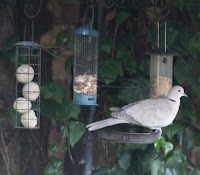Greylag Geese

I saw this beautiful little greylag goose family while I was out with the official blog dog last week. I was delighted to see them as usually in my local patch I only see Canada Geese and their goslings. Although it looks like I’m close by them, I got the photo from a distance on top of a bank and left as soon as I’d taken the picture so as not to disturb them. Greylag geese, or to give them their catchy Latin name Anser Anser, are found in gravel pits, lakes and reservoirs year round in southern Britain. There is a wild breeding population further North, our southern birds are thought to be the result of reintroductions in the 60’s and 70’s. They eat grass, cereals leaves, spilled grain and green shoots. As grass is low in nutritional value they graze almost constantly. Interestingly, the grass doesn’t remain in the gut for long, as the bird needs to be unhindered for flight. This explains why there’s goose poo everywhere when there are geese present! Grey



